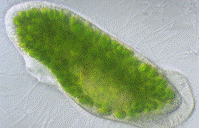Biological Sciences, School of

School of Biological Sciences: Faculty Publications
Document Type
Article
Date of this Version
2004
Citation
Animal Behaviour (2004) 67: 1,127-1,132. DOI: 10.1016/j.anbehav.2003.06.021.
Abstract
We investigated whether male greater sage grouse, Centrocercus urophasianus, select lek locations on the basis of topographic features that affect their visibility to both conspecific females and a major avian predator, the golden eagle, Aquila chrysaetos. We mapped locations of displaying males at all leks in a local population and used a Geographic Information System (GIS) and digital elevation model (DEM) to generate ‘viewsheds’ around male locations within a boundary set by the estimated maximal visual acuity of the viewer. Areas visible around leks were compared to those visible around random sites with the same conformation of displaying males. Male sage grouse displayed at sites where surrounding topography both diminished long-range visibility (> 1,000 m) and enhanced short-range visibility (< 500 m) to ground observers. These characteristics could (1) force eagles to monitor lek activity from the air, where they may be more visible to their prey, (2) make displaying males more visible to females and (3) allow males to monitor predators approaching the lek more easily. These results suggest that, in open habitats, visually signalling animals may exploit local topography to control both their visibility to receivers and the visibility of their immediate surroundings.


Comments
Copyright 2004, Elsevier. Used by permission.